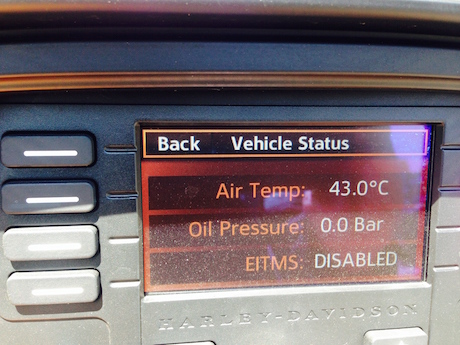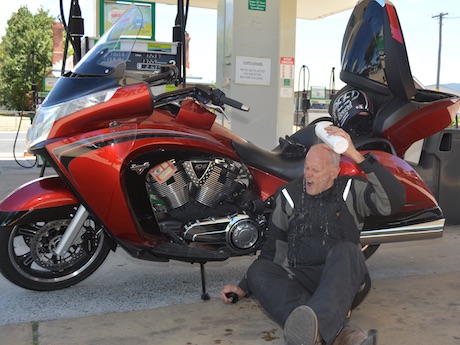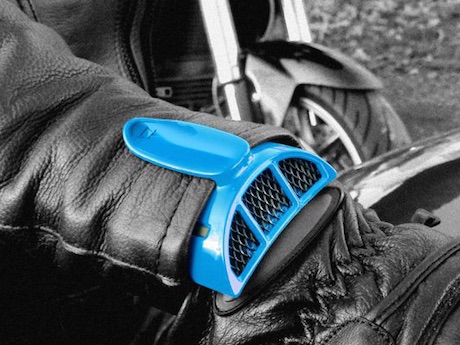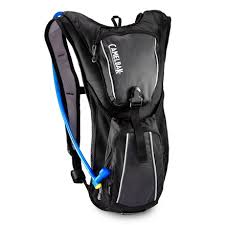A massive dust storm over the next couple of days and heatwave conditions across NSW and Queensland are expected to make life difficult for riders.
Earlier this month, a heatwave in Western Australia cost the lives of a rider and hiker from dehydration.
Last year a 30-year-old father also died from dehydration after riding in the forests of the Sunshine Coast hinterland.
Heatwave conditions are bad enough, but add in a dry dust storm and it makes dehydration a bigger risk for riders exposed to the elements.
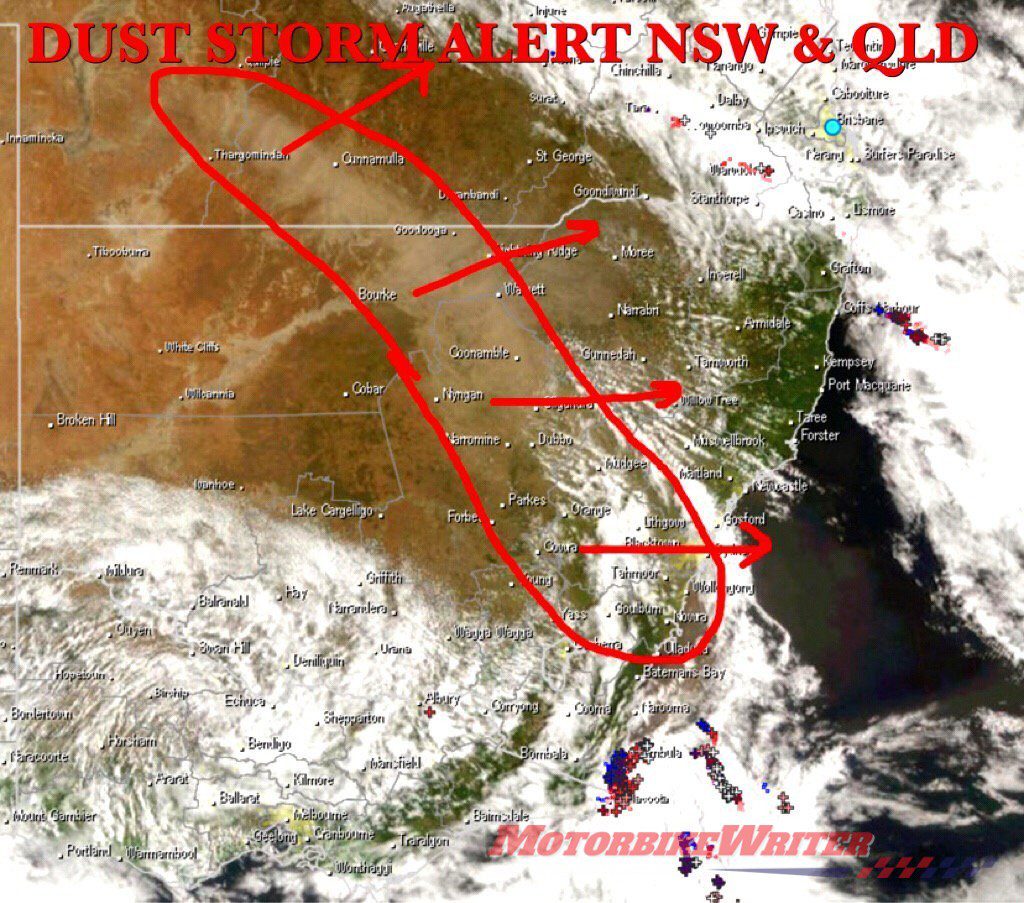
Road riders tend to be a bit blasé about hydration. Maybe it’s because riding doesn’t take a huge amount of effort.
The dangers of becoming dehydrated in a heatwave are headaches, disorientation, heat stroke, muscle cramps, loss of concentration, drowsiness and nausea, each of which can cause crashes.
And the problem is that once any of these symptoms becomes evident, it is already too late to do anything about it.
The dust storm could also clog your bike’s air filter, so remember to check it after your ride.
Riders in Queensland should also be aware of current bushfire warnings.
Tips to avoid dehydration in a heatwave:
- Don’t drink too much alcohol the night before a ride. It has a diuretic effect which means it causes you to urinate more water than you take in which means you are losing fluid. And you can’t counteract that by drinking lots of water because most of it will go out in your urine. Obviously, don’t drink alcohol while you are riding!
- Start drinking water as soon as you wake and keep sipping water right up until you get on your bike. It takes about half an hour for water to reach your muscles. Guzzling water just before a ride is not good as it can make your stomach to cramp. The Royal Flying Doctor Service which has attended dehydrated riders in the Outback, recommends carrying 10 litres of water per day! Read their Outback riding tips here.
- Wear ventilated motorcycle clothing. Leathers may protect you better in a crash, but they create a “microclimate” which impairs your ability to lose heat. As a result you will produce more sweat to decrease your core temp. Instead, wear a flow-through jacket. There are heaps of options on the market. Make sure they have vents in the back so the air flows through. Also, loosen the sleeves so you get plenty of air on your wrists which have a lot of blood vessels close to the skin to effectively cool you down. However, be aware that a flow-through jacket cools you down because it is drying the sweat off your skin which can lead to dehydration. A set of Ventz up your sleeve will also keep you cool as air flows up your arms.However, don’t be fooled by your level of coolness as ventilation can also cause you to loose more water through evaporation. So you still need to keep drinking plenty of water.
BUY Ventz motorcycle jacket vents NOW - Don’t be tempted to remove your jacket in the heat! Exposed skin may feel cooler, but that’s because the sweat is evaporating quicker, but that is just making you more dehydrated. And while your skin feels cool, you’ll be tricked into staying in the sun longer which leads to sunburn. That also leads to dehydration because your body needs water to repair and renew damaged skin.
- Get a Camelbak or other brand of water-dispensing unit so you can continue to take small sips of water while you are riding. I’ve seen riders on GoldWings and other big tourers with cup holders so they can take slurps from a water bottle. That’s obviously not as safe as the hands-free Camelback option, but anything is better than nothing. Some people don’t like Camelbaks because the water gets hot, but the temperature of the water doesn’t affect dehydration.
- Stop more often than usual and hang out in the shade or in an air-conditioned cafe. Since you are drinking lots of fluids, you will probably need to stop anyway!
- While you’re stopped, have a coffee, but take it easy. No need to swear off your favourite caramel latte, but avoid excess coffee. That also goes for caffeinated drinks such as Red Bull. High levels of caffeine have a diuretic effect just like alcohol.
- While having a coffee break, avoid having too many sweet cakes, donuts and muffins. Sugar can dehydrate you if it gets to very high levels in your blood. This can happen if you are a diabetic, take certain medications or have an infection or some organ diseases. Sugar causes your kidneys to produce more urine to eliminate the sugar, leading to dehydration. Likewise, don’t drink too many sugary drinks. Best to stick to plain water, real fruit juices with no added sugar or drinks such as Gatorade that replace salts and minerals lost in sweat.
- We’ve talked a lot about urine and it’s important that you monitor the colour. It should be a straw colour. If it’s too dark, you are dehydrated.
- Sweat also depletes your body of sodium and if it becomes too low, it can cause many of the same symptoms as dehydration. The average diet probably has enough sodium, but it’s good to have a little bit of salt on your meals or drink sports drinks that have a sodium supplement. However, beware of sports drinks with caffeine and sugar.
- Ok, I know I said there were only 10 tips, but dehydration doesn’t just occur in a heatwave. In winter, the cold can shut off the body’s thirst mechanism and trick you into thinking you’re not sweating. Meanwhile, your body is losing fluids as the air passes over your body.


